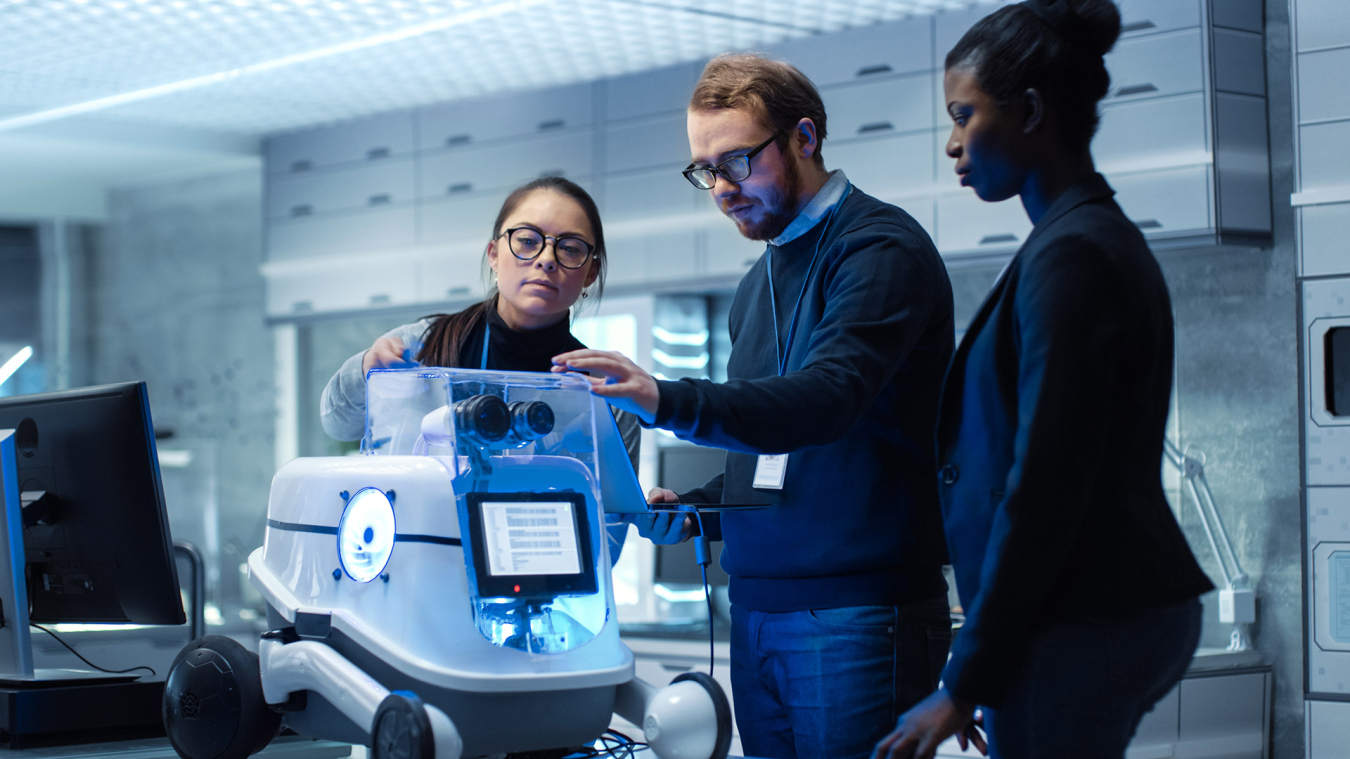Today, the U.S. Department of Energy’s Office of Energy Efficiency and Renewable Energy (EERE) announced 10 winners for the first phase of the Envelope Retrofit Opportunities for Building Optimization Technologies (E-ROBOT) Prize, a $5 million competition
August 19, 2021
Today, the U.S. Department of Energy's Office of Energy Efficiency and Renewable Energy (EERE) announced 10 winners for the first phase of the Envelope Retrofit Opportunities for Building Optimization Technologies (E-ROBOT) Prize, a $5 million competition focused on fast-tracking advanced robotics solutions for building envelope retrofits. From attics to crawl spaces and wall cavities to exterior facades, these E-ROBOT Prize Phase 1 winners are transforming the existing building space with a sweeping portfolio of innovations that demonstrate the promise of advanced robotics for building envelope retrofits.
All Phase 1 participants will receive judges’ comments within the next two weeks. For those teams selected to move onto Phase 2, please check your email over the next few weeks for next steps and register for the Phase 2 Rules Webinar on Sept. 16, 2021, at 11 a.m. ET.
Apellix Techstyle Materials – "Drone for Applying Multifunctional Control Layers"
Jacksonville, Florida
The Apellix aerial drone measures, maps, and scans the exterior side of a building envelope, and then applies and inspects spray material layers. The drone flies autonomously with an umbilical to power its flight and supply it with spray coating materials. The Apellix drone can work continuously and complete the installation and inspection of a control layer over an entire building envelope in a single flight—reducing the time to complete a re-siding project from 1–2 weeks to a day or two, and lowering the total cost of a project by 50%.
F.G.S. – "Revolutionizing Robotic Retrofits"
Bethlehem, Pennsylvania
Team F.G.S. is uniting the three key stakeholders in the robotic envelope retrofit process—architects, general contractors, and robotics start-ups—to create a holistic ecosystem that addresses sensing, mapping, and retrofits. This team's user-friendly modeling software and robotic retrofit tool can implement minimally invasive envelope remediations such as caulking, aerosol sealing, and foam insulating across all types of existing buildings.
Friendly Robots Company – "The Mayfly and the Aardvark"
Berkeley, California
The Mayfly and the Aardvark is a combination of an autonomous air duct inspection drone that maps and identifies deficiencies with a remediation robot that cleans and repairs. Rather than crawling through attics and climbing ladders, workers can deploy the drone, review the gathered information, and dispatch the remediation robot to fix the issues. This new approach prioritizes worker safety and efficiency on the job site.
FunForm – "Robotic Assisted Exterior Insulated Finish Systems"
Westport, Connecticut
The FunForm team is automating design, fabrication, and installation of exterior insulation and finish systems (EIFS) through robot technology to increase worker safety and efficiency, while cutting installation costs in half. This solution addresses the most labor-intensive step in EIFS by using mechanically fastened large format expanded polystyrene (EPS) panels, adapting mapping and modeling tools to optimize material layout, and implementing robotic assistance in fitting, scribing, and installing the panels.
New York University – "EASEEbot"
New York, New York
EASEEbot is a non-invasive solution to locate and document moisture intrusion, thermal bridges, and air leaks. The AI-powered and robot-assisted system scales and flies through buildings to auto-generate 3D models using advanced reconstruction techniques. The system identifies and quantifies common envelope defects, and applies long-wave radar and machine learning to detect hidden deep moisture penetration and other major envelope defects.
Northeastern University – "Precise Air-Sealing Robot for Inaccessible Spaces (PARIS)"
Boston, Massachusetts
To address the challenges in attic crawlspace air-sealing, the Precise Air-sealing Robot for Inaccessible Spaces (PARIS) can easily traverse joist beams and uneven surfaces, create a 3D feature map via sensor-fusion, and perform targeted air-sealing. This robotic technology will help home energy contractors accomplish challenging retrofit tasks involving air-sealing in attic crawl spaces, while keeping human workers outside of the cramped and hazardous conditions.
Roboattic – "Robotic System for Air Sealing and Insulating Attics"
Berkeley, California
The Roboattic team has designed a multilegged robotic system to air seal and insulate inaccessible attics and confined spaces in multifamily buildings. The system is able to navigate common obstructions encountered in confined spaces while crawling through attic spaces to dispense spray foam into large and small gaps in the ceiling surface. In uninsulated and under-insulated spaces, the system can apply additional insulation in a safe and cost-effective way.
R-STRIPE – "The R-STRIPE Deep Energy Retrofit System"
Chester, Connecticut
The R-STRIPE system involves a robot that 3D scans the building to create a work plan, strips old cladding, and then applies a custom patented air and water barrier insulating panel system. The combination of robotic technologies and proven building materials provide building owners energy savings and a return on retrofit investments by making it faster, easier, and less invasive for older buildings to hit modern energy standards.
Thermadrone – "Drone Thermography for Building Envelope Retrofit"
Berkeley, California
The Thermadrone project takes drone-captured images of building envelopes and applies advanced modeling techniques to fast-track diagnostics and verify the success of retrofits. The team applies deep learning and AI-based techniques to automatically identify locations with thermal anomalies (indicating air or water leakage). Traditional thermographic imaging requires full building pressurization, two entire building scans, and review and interpretation of the images.
wall-EIFS – "wall-EIFS"
Tucson, Arizona
wall-EIFS is an autonomous robot that scans and analyzes building envelopes, avoiding obstacles and adjusting to anomalies, and then applies 3D-sprayable EIFS. The wall-EIFS system records building texture and material properties, which means it can replicate and preserve the appearance of historic buildings in addition to transforming dated buildings. Adding exterior insulation to existing wood frame and solid masonry buildings is particularly important, as these building types are notoriously difficult to insulate.
Visit the American Made Challenges website for more information and official prize rules.
Learn more about each of these winning projects here.

